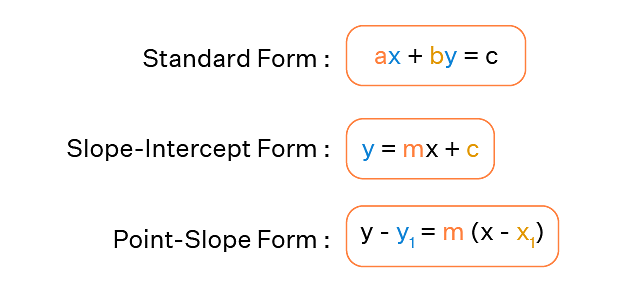Orthocentre of triangle having vertices as A (1,2), B(3,-4), C(0,6) is
- (-129, -37)
- (9, -1)
- (7, -3)
- (28, -16)
The Correct Option is A
Solution and Explanation
Correct answer is (A). (-129, -37)

AD = (y-2)=\(\frac{3}{10}\)(x-1)
3x-10y+17=0….(i)
BE = (y+4)= \(\frac{1}{4}\)(x-3)
x-4y=19 …..(ii)
solving (i) and (ii),
(-129, -37) is Orthocentre
Top Questions on Straight lines
- The equation of a straight line is given by \( y = 3x + 4 \). What is the slope of the line?
- BITSAT - 2025
- Mathematics
- Straight lines
- Find the slope of the line passing through the points $ (1, 2) $ and $ (3, 6) $:
- BITSAT - 2025
- Mathematics
- Straight lines
- The equation of the line passing through the point \((1, 2)\) and perpendicular to the line \(3x + 4y - 12 = 0\) is:
- AP EAPCET - 2025
- Mathematics
- Straight lines
- Find the slope of the line perpendicular to the line $ 3x + 4y - 12 = 0 $.
- AP EAPCET - 2025
- Mathematics
- Straight lines
- Two straight lines \( 3x - 2y = 5 \) and \( 2x + ky + 7 = 0 \) are perpendicular to each other. The value of \( k \) is:
- JEECUP - 2024
- Mathematics
- Straight lines
Questions Asked in JEE Main exam
Let \( y^2 = 12x \) be the parabola and \( S \) its focus. Let \( PQ \) be a focal chord of the parabola such that \( (SP)(SQ) = \frac{147}{4} \). Let \( C \) be the circle described by taking \( PQ \) as a diameter. If the equation of the circle \( C \) is: \[ 64x^2 + 64y^2 - \alpha x - 64\sqrt{3}y = \beta, \] then \( \beta - \alpha \) is equal to:
- JEE Main - 2025
- Parabola
Let one focus of the hyperbola $ \frac{x^2}{a^2} - \frac{y^2}{b^2} = 1 $ be at $ (\sqrt{10}, 0) $, and the corresponding directrix be $ x = \frac{\sqrt{10}}{2} $. If $ e $ and $ l $ are the eccentricity and the latus rectum respectively, then $ 9(e^2 + l) $ is equal to:
- JEE Main - 2025
- Conic sections
Let $ A \in \mathbb{R} $ be a matrix of order 3x3 such that $$ \det(A) = -4 \quad \text{and} \quad A + I = \left[ \begin{array}{ccc} 1 & 1 & 1 \\2 & 0 & 1 \\4 & 1 & 2 \end{array} \right] $$ where $ I $ is the identity matrix of order 3. If $ \det( (A + I) \cdot \text{adj}(A + I)) $ is $ 2^m $, then $ m $ is equal to:
- JEE Main - 2025
- Determinants
- An air bubble of radius 0.1 cm lies at a depth of 20 cm below the free surface of a liquid of density 1000 kg/m\(^3\). If the pressure inside the bubble is 2100 N/m\(^2\) greater than the atmospheric pressure, then the surface tension of the liquid in SI units is (use \(g = 10 \, {m/s}^2\)).
- JEE Main - 2025
- Surface Tension
- A force of 49 N acts tangentially at the highest point of a sphere (solid of mass 20 kg) kept on a rough horizontal plane. If the sphere rolls without slipping, then the acceleration of the center of the sphere is:
- JEE Main - 2025
- Quantum Mechanics
Concepts Used:
Straight lines
A straight line is a line having the shortest distance between two points.
A straight line can be represented as an equation in various forms, as show in the image below:

The following are the many forms of the equation of the line that are presented in straight line-
1. Slope – Point Form
Assume P0(x0, y0) is a fixed point on a non-vertical line L with m as its slope. If P (x, y) is an arbitrary point on L, then the point (x, y) lies on the line with slope m through the fixed point (x0, y0) if and only if its coordinates fulfil the equation below.
y – y0 = m (x – x0)
2. Two – Point Form
Let's look at the line. L crosses between two places. P1(x1, y1) and P2(x2, y2) are general points on L, while P (x, y) is a general point on L. As a result, the three points P1, P2, and P are collinear, and it becomes
The slope of P2P = The slope of P1P2 , i.e.
\(\frac{y-y_1}{x-x_1} = \frac{y_2-y_1}{x_2-x_1}\)
Hence, the equation becomes:
y - y1 =\( \frac{y_2-y_1}{x_2-x_1} (x-x1)\)
3. Slope-Intercept Form
Assume that a line L with slope m intersects the y-axis at a distance c from the origin, and that the distance c is referred to as the line L's y-intercept. As a result, the coordinates of the spot on the y-axis where the line intersects are (0, c). As a result, the slope of the line L is m, and it passes through a fixed point (0, c). The equation of the line L thus obtained from the slope – point form is given by
y – c =m( x - 0 )
As a result, the point (x, y) on the line with slope m and y-intercept c lies on the line, if and only if
y = m x +c